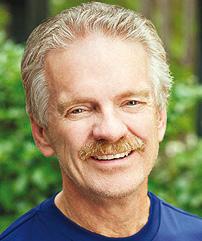Sports Medicine Corner

My (nearly) annual trips to NSCAA/USYS (convention and workshop) are always a highlight of the year because it takes me to the sidelines, so to speak, where I get to talk with practicing coaches of all levels (and see some long time friends, too).
I also take advantage of some of the field sessions to see how various concepts of the game are being taught. Still making meager attempts at plying my trade on defense, maybe I’ll pick up a tip or two. And the merging of the annual meetings of these two influential groups will extend the educational options for those in attendance.
The chance to see such names as Dorrance, Twellman, Wynalda, DiCicco, Heinrichs, Snow, et al. pass along their considerable experience is worth the price of admission. But don’t just pack a lunch and park in the bleachers that surround the field sessions, check out some classroom sessions – although in my humble opinion, the program committee should just give Dick Bate a field and some players for the entire convention and let him teach what ever he wants.
Write down WED 815-915pm Exhibit Hall A/B IN INK on your schedule and don’t miss it. He’s that good. There are a ton of great lectures and sessions available, so read the program carefully and plot out your time. It’ll be another year before this collection of experience will be under one roof again.
Not to put myself in the rarified air of Bate, Dorrance, Ortega, Miller, and Barker, and more but Sam Snow (USYS DOC) has been an advocate on making some of the more scientific aspects of the game available and has frequently asked for me to help out in that regard. He asked if I would speak on three different topics this year in Indianapolis:
1. The FIFA 11+ Injury Prevention program. When FIFA started their Medical Assessment and Research Centre, F-MARC was tasked with making the game safer. The first task was to identify what injuries were problematic. The second task was to determine what, if any, injuries were preventable. Their third task was to develop, test, and make available prevention programs that were proven to prevent injury in soccer.
The top five injuries in soccer continue to be ankle sprains, hamstring strains, groin strains, knee sprains, and head injury.
The 11+ is the Second Generation prevention program developed by F-MARC and has been shown to reduce team injury rates by a third – and with limited numbers of players on any team in a compact, match-dense season, a third fewer injuries should be a welcome addition to training and team development. We’ll go over all aspects of the program and show how seamlessly it can be integrated into any team’s training. (Saturday 1245p, room CC 206)
2. Head Games. Anyone unaware of the increased awareness of the danger of head injury probably shouldn’t be coaching. That most head injuries are accidental doesn’t mean they should be ignored. Recognition of when these injuries might occur is critical information for players and parents alike to understand. Once the injury has happened, the coach needs to be aware of what to look for in order to make the first critical decision – when to remove a player from participation.
Once the player is removed from play, two processes occur that are entirely out of the coach’s control. First is the healing process and second is the legal process (dictated by most all states) that makes return to play a purely medical decision. Considering the frequency of head injury in soccer, it’s only a matter of when one of your players will be concussed. (Friday, 1030a, room CC 126-127)
3. Coping with Ramadan. The fraction of the U.S. population that follows Islam is growing and they love their soccer as much as you do. One of the pillars of the Muslim faith is the holy month of Ramadan where all Muslims in good faith and health ritualistically fast during the daylight hours. This four-week period of religious rebirth is a highly personal time for Muslims.
As the Muslim calendar is based on the lunar year, Ramadan advances a few weeks earlier each year. Right now, Ramadan occurs during the summer (camp season) and will soon occur during the spring season. The month of the fast presents team, individual, and social challenges for the coach that need not be all that disruptive for the coach who makes some preparations.
With the ever increasing number of Muslims, it’s not if you’ll have a Muslim player some day, it’s a matter of when so be prepared. (Saturday, 930a, room CC 205)
And enjoy Indy. A great place.
p.s. I see Dawn Scott on the list of clinicians and, I think, she is new to presenting at NSCAA. She is a first rate fitness coach who works with the U.S. women’s national team. I would strongly suggest scouring the program in Indy and making every attempt at attending her session.
